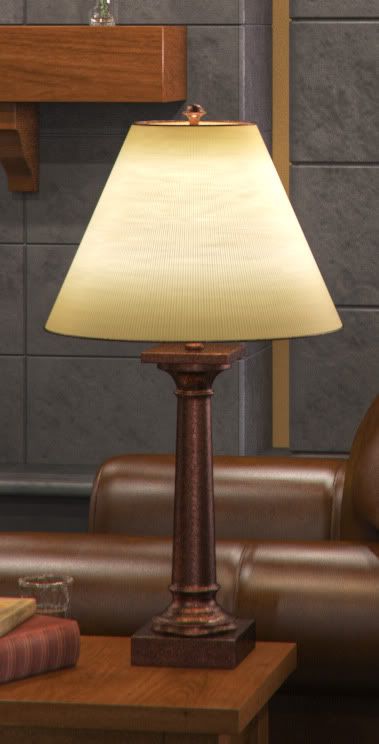- Tue Dec 14, 2010 6:12 pm
#334390
Hi all,
I've just got hold of Maxwell 2.5 (previously on v1) and I am trying to get to grips with SSS. I'm particularly intrigued by thin SSS as a way of creating a realistic lampshade material. See the image below:

Here the shade comprises two thin layers of different materials bonded together. The outer finish is a finely textured fabric and the inner surface is smooth white coated paper (or possibly PVC).
How should I model the shade - as two separate surfaces or as a single surface with no thickness? Then how should I assign materials and SSS so that the lampshade "glows" as it should?
This is all new territory for me so any pointers would be fantastic. Does anyone have any example renders and/or material settings that they have used in the past?
Cheers,
Nik
I've just got hold of Maxwell 2.5 (previously on v1) and I am trying to get to grips with SSS. I'm particularly intrigued by thin SSS as a way of creating a realistic lampshade material. See the image below:

Here the shade comprises two thin layers of different materials bonded together. The outer finish is a finely textured fabric and the inner surface is smooth white coated paper (or possibly PVC).
How should I model the shade - as two separate surfaces or as a single surface with no thickness? Then how should I assign materials and SSS so that the lampshade "glows" as it should?
This is all new territory for me so any pointers would be fantastic. Does anyone have any example renders and/or material settings that they have used in the past?
Cheers,
Nik
FormZ v6.7.2
Apple Mac Pro 2 x 2.4GHz Quad-Core, 6Gb RAM, ATI Radeon HD 5770
Apple Mac Pro 2 x 2.4GHz Quad-Core, 6Gb RAM, ATI Radeon HD 5770






 - By Gaspare Buonsante 20200309160206
- By Gaspare Buonsante 20200309160206